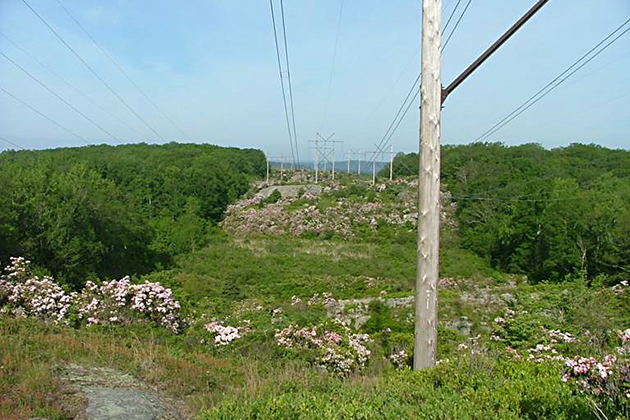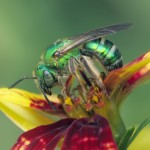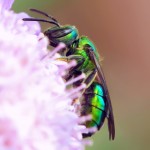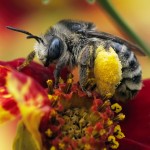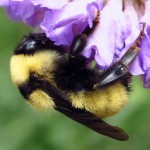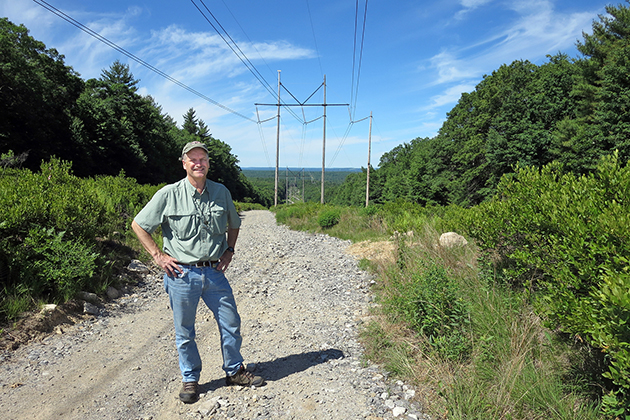
Power lines, long considered eyesores or worse, a potential threat to human health, actually serve a vital role in maintaining the health of a significant population, according to new research out of the University of Connecticut.
The corridors that crisscross New England’s rolling landscape are home to native plant and animal life that require the type of habitat maintained beneath the power lines, according to David Wagner, professor of ecology and evolutionary biology.
Particularly in regions of the Northeast with high human population density, the power lines are vital to the conservation of hundreds of species, as documented in two recent studies by Wagner. One was published this month in the journal Forest Ecology and Management, and another is forthcoming in the Annals of the Entomological Society of America.
“All manner of vertebrate and invertebrate life as well as a wide range of wild flowers and other native plants flourish there,” says Wagner.
If the semi-open landscape – areas of grass and weeds, shrubs, and young forest growth – in the transmission corridors was not managed as it is now by power companies, the land would eventually turn into dense forest with heavy cover and limited sunlight, unsuitable for many of those species, Wagner says.
From left: metallic green bee (Agapostemon sericeus) female, metallic green bee (Augochlora pura) female, long-horned bee (Melissodes sp.) female, and golden northern bumble bee (Bombus fervidus) queen. (Kim Phillips Photos)
In one study, Wagner and co-authors examined bee species along a transmission line in Southeastern Connecticut over a two-year period. They identified roughly 50 percent of the state’s bee species there, including one previously thought to be extinct in the United States, the Epeoloides pilosula, which had not been found in this country since 1960.
The landscape is also the ideal habitat for species such as the New England Cottontail rabbit, says Wagner. While the population of its more adaptive cousin, the Eastern Cottontail, has not been impacted by development in the Northeast, the New England Cottontail occupies less than a fifth of the area it once called home.
Birds such as the American woodcock and indigo bunting, reptiles including the wood and box turtles, and many insect species, are also dependent on the open, sunny habitats that are typical of the transmission line corridors.
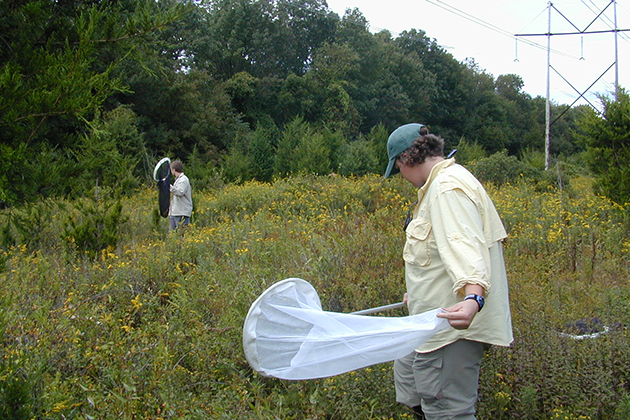
Wagner’s related investigation measured plant diversity and cover along an 89-mile transmission line corridor.
Researchers found that the richness of plant life along transmission lines was significantly higher than in the adjacent wooded areas. They documented 326 plant species in power line plots, more than twice the number found in woodland plots.
In particular, eight common heath species important to several finicky bee species – those with narrow preferences in pollen sources – were significantly more abundant in power line plots than in the nearby woods.
Other plants more abundant along the power lines included such commonly known flower species as goldenrod, asters, daisies, and sunflowers, as well as a variety of herbs and shrubs that provide much of the late-season pollen and nectar for bees, beetles, moths, and butterflies.
Northeast Utilities, the company that owns and manages approximately 43,000 acres throughout Connecticut, Massachusetts, and New Hampshire, created a land trust in 2012 to promote the preservation of open spaces in New England.
NU’s manager of transmission vegetation management, Anthony Johnson ’80 (CAHNR), says the company works cooperatively with organizations such as the Audubon Society and the New England Wildflower Association, as well as providing support for academic research such as Wagner’s.
“When I first started this job, I was always looking up – at the trees and the wires – making sure there was nothing to interfere with the power lines,” Johnson says. “Now, I also find myself looking down – watching for turtles and snakes and wildflowers and seeing how abundant they are.”
Wagner co-authored the paper in Forest Ecology and Management with Kenneth Metzler, UConn research specialist; Stacey Leicht-Young of the Arnold Arboretum at Harvard; and Glen Motzkin of The Conway School in Massachusetts. The vegetation sampling was also supported by teams of field botanists in three states: Sarah Treanor Bois and Dan Bruzzese in Connecticut; Matt Hickler, Glenn Motzkin, and Roberta Lombardi in Massachusetts; and Dan Sperduto in New Hampshire.
